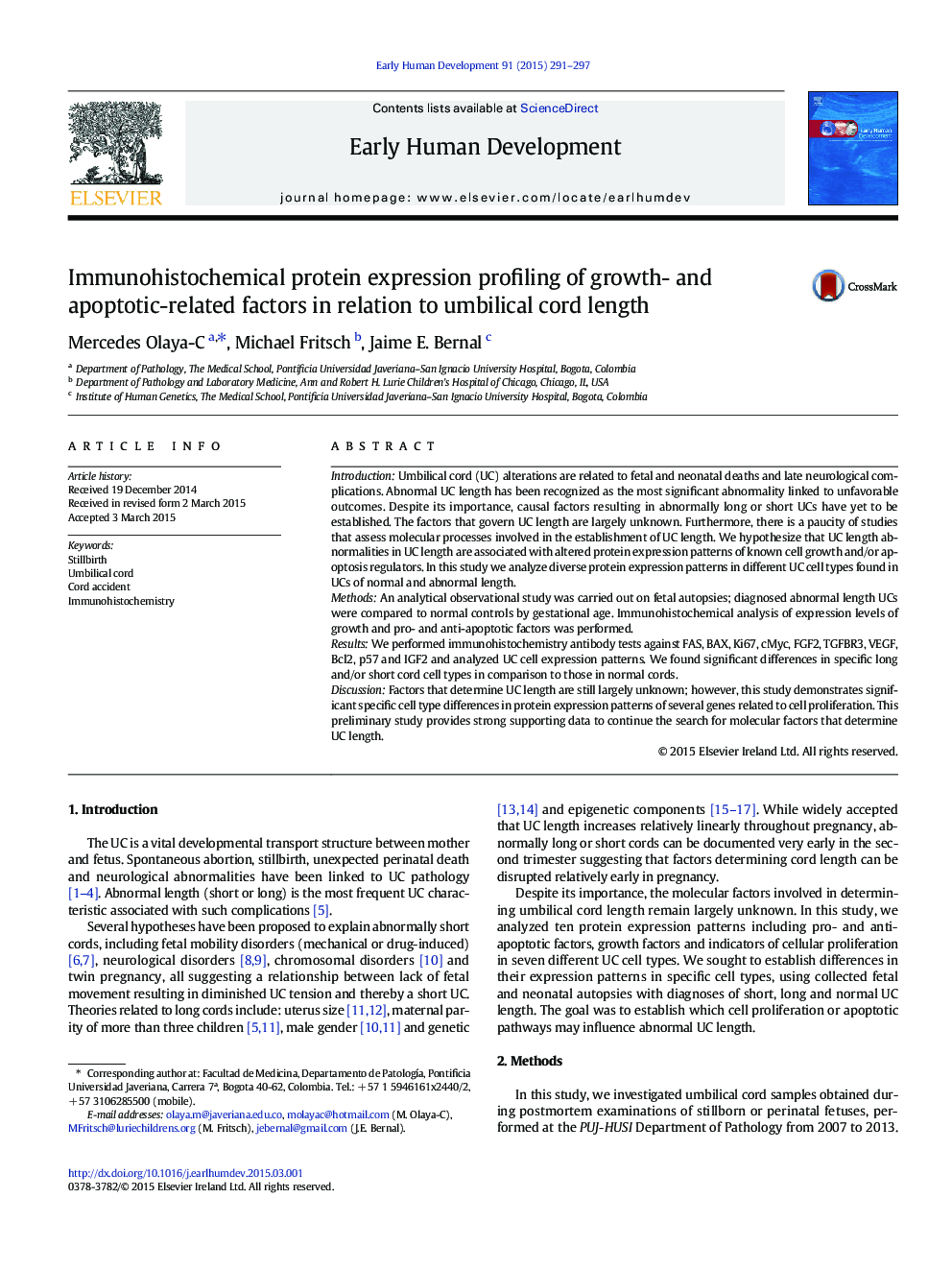| Article ID | Journal | Published Year | Pages | File Type |
|---|---|---|---|---|
| 3917880 | Early Human Development | 2015 | 7 Pages |
•The factors that govern UC length are largely unknown.•We found significant differences in specific cell types between long/short cords.•This study provides the first detailed examination of the altered molecular pathways.•This study supports the search for molecular factors that determine UC length.
IntroductionUmbilical cord (UC) alterations are related to fetal and neonatal deaths and late neurological complications. Abnormal UC length has been recognized as the most significant abnormality linked to unfavorable outcomes. Despite its importance, causal factors resulting in abnormally long or short UCs have yet to be established. The factors that govern UC length are largely unknown. Furthermore, there is a paucity of studies that assess molecular processes involved in the establishment of UC length. We hypothesize that UC length abnormalities in UC length are associated with altered protein expression patterns of known cell growth and/or apoptosis regulators. In this study we analyze diverse protein expression patterns in different UC cell types found in UCs of normal and abnormal length.MethodsAn analytical observational study was carried out on fetal autopsies; diagnosed abnormal length UCs were compared to normal controls by gestational age. Immunohistochemical analysis of expression levels of growth and pro- and anti-apoptotic factors was performed.ResultsWe performed immunohistochemistry antibody tests against FAS, BAX, Ki67, cMyc, FGF2, TGFBR3, VEGF, Bcl2, p57 and IGF2 and analyzed UC cell expression patterns. We found significant differences in specific long and/or short cord cell types in comparison to those in normal cords.DiscussionFactors that determine UC length are still largely unknown; however, this study demonstrates significant specific cell type differences in protein expression patterns of several genes related to cell proliferation. This preliminary study provides strong supporting data to continue the search for molecular factors that determine UC length.
Graphical abstractFigure optionsDownload full-size imageDownload high-quality image (285 K)Download as PowerPoint slide
